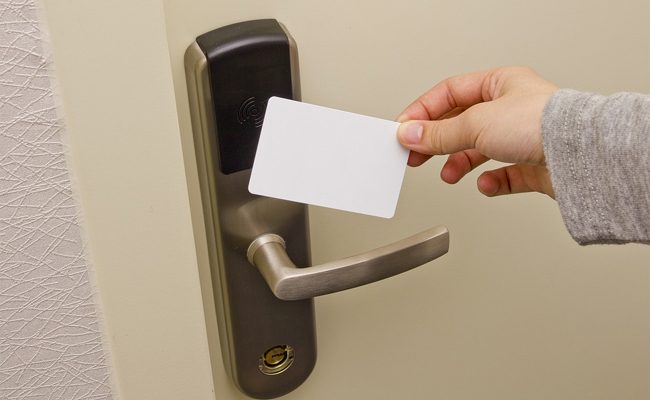
Commercial buildings need regular inspection and preventative maintenance to ensure their function and stability. Maintaining smooth operation across the whole building solely relies on the efficiency of the electrical, plumbing, and HVAC systems. However, leaving them exposed could potentially cause harm to the building’s inhabitants, not to mention a dangerous eyesore.
When securing and accessing critical building components, you can always rely on access doors to grant you these features. Manufacturers built these panels to perform, and they come in various functions and designs to primarily fulfill your building’s access requirements.
Contractors and building personnel depend on access panels during inspection and maintenance for quick and convenient access. Aside from their primary function, you can also use these panels to successfully conceal pipes, wirings, fixtures, and valves, to name a few.
Despite their size and appearance, access panels still function as a door where you have to swing it sideways or upwards open — but what if you need to install it in a cramped space? There are instances when you need to find a panel specifically designed for limited areas where a pivoting door is not suitable due to an obstruction. A practical solution to this is by installing adjustable and removable access doors.
A removable access door has the same primary function as a standard panel. As the name suggests, you need to remove the door so that you can access its contents. It comes with a gasketed cover and hidden flange to blend seamlessly into the installation surface.
Hiding A Removable Access Door
Removable access doors serve their built purpose, but what about the building’s aesthetics? Despite their seamless feature, you can still see the panel when seen up close or even from a distance. This functional amenity can instantly upset your interior decoration, so how do you deal with it? Here are some creative solutions in hiding that awkward access door placement in your wall.
Place a Decor
If you have a visible entry panel, consider placing decorative items such as potted plants, paintings, or furniture in front of the access door. However, the maintenance personnel must easily remove the decoration piece during repair, maintenance, or when necessary.
Choosing a creative solution also allows you to improve the overall aesthetic of your home or office space and personalize it as well. Other ornamental pieces that you can use to camouflage your access panel are picture frames, a mirror frame, or even a corkboard. A well-placed decor is perhaps the quickest way to hide the access door on your wall.
Add an Air Return
Adding a frameless, louvered air return passage to your removable access door gives it a dual purpose. Adding a ventilation feature is beneficial in improving air quality, and you can also customize the panel to a variety of sizes.
Aside from adding a ventilation system, you can also incorporate the panel as part of the interior design. A perfect example is this is skylight roof hatches. Not only will you have safe passage to your roof, but you will also have more natural light coming in — effectively reducing power costs. Ensure that the contractor installs the hatch correctly as a lousy installation service can outweigh its efficiency.
Choose a Low Traffic Area
The only time to install removable access doors is when the access to valves and controls behind your wall is limited to a narrow area. These are often restricted to concealed areas, but you can always coordinate with a commercial contractor or designer during the building phase when it’s not. A good construction partner will find ways to mount the access panels above the ceiling or below the floor surface.
Match the finish to the Surface
Access doors’ features and designs have dramatically increased over the years, and with it comes a variety of finishes and coatings. Complimenting a panel’s surrounding surface by applying a powder coat or aluminum coat is a great way to conceal the unit.
Some models allow users to paint over the door without disrupting their function. You can get creative and apply a similar paint to the wall or conceal the door with an art mural. In addition, you can also reinforce security and reduce unauthorized access by placing a caution sign over the door panel.
Choose Virtually Invisible Access Panels
Many access panel units have optional concealing properties making them nearly opaque when installed. Only a 1/16″ part of the panel will be visible after installation and finishing. Apply the same surface paint to the cover to conceal the door further. Some features to look for in an almost visible panel are:
- Near-invisible frame and hardware
- Concealed mechanical touch-latch
- Concealed hinge
Build a Cabinet Over the Access Door
One common approach to concealing access doors is installing them inside a cabinet. The installation process would run normally, and the only difference is that your contractor would build a wardrobe around the unit.
While this setup may seem intimidating, the process isn’t too tricky as it looks. You can purchase a pre-built cabinet and cut the back before mounting it over the access panel. Choose to buy a cabinet without shelving since it will defeat the purpose of having convenient access to components behind the wall.
If there is an existing cabinet, the contractor can install the access unit behind it by removing the shelving or any stored items that can cause a hindrance. This practical solution is often applicable in bathrooms and toilets, where a new cabinet usually makes an ideal entry point.
Takeaway
Access doors are an essential part of any commercial or residential building. They conveniently access underlying building components necessary during repairs, renovations, and maintenance. However, there are instances when contractors place the panels in inadequate places, distracting anyone who passes by.
Thankfully, these creative and practical solutions are mostly easy and cost-efficient. These remarkable ideas can help conceal access panels without hindering their function and purpose.
Leave a Reply